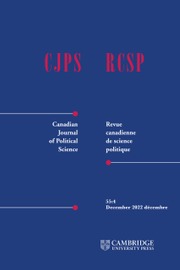The Handbook of Ethnic Media in Canada by Daniel Ahadi, Sherry S. Yu, and Ahmed Al-Rawi is a comprehensive, edited volume that explores the landscape of ethnic media in Canada, in addition to its challenges, diasporic idiosyncrasies, and future implications. Through quantitative and qualitative analyses of various ethnic media outlets, readers are provided with an insightful guide to understanding how Canadians engage with linguistically and culturally diverse media.
Organized into three parts, the book begins with a discussion about the development and questions involved in governing ethnic media in Canada today. By positioning ethnic media in the context of Canadian multiculturalism, part one delivers impactful commentary about the confines of traditional categories of race or ethnicity that have since excluded the multifaceted nature of diasporic Canadian identity (p. 35). With Elim Ng's case study of Chinese Canadian television, this section also emphasizes the consequences of neoliberal policies and governance in diminishing support for ethnic broadcasting (p. 73).
Against the backdrop of “continuity-in-change” (p. 38), part two examines ethnic media in practice by engaging with diverse scholars, each with a chapter dedicated to a different ethnic case study. This section delves into the historical legacies, community-led initiatives, and new, digital pathways of ethnic media in Canada by analyzing the South Asian, Arab, Polish, Italian, and Ismaili Muslim diasporic communities. Key themes from Syeda Nayab Bukhari's chapter discuss the lack of mainstream media attention towards South Asian immigrant communities while Ahmed Al-Rawi's illustrates how ethnic media shapes Arab cultural identities. Part two also highlights the work of Sanzone and Principe exemplifying how shifts in communication can bridge and bond diasporas to both Canada and the homeland (p. 187). Overall, part two is digestible for those interested in the nuances within and between linguistic, ethnic, and immigrant communities in Canada.
Beyond ethnic media, part three explores alternative forms of ethnic communication and how they might orient towards particular diasporic sub-groups. For instance, these chapters incorporate unique initiates ranging from panethnoracial mediums for artists as discussed by Jiwani and Bernard-Brind'Amour, intersectional organizing for creative productions (chapter 12 by Alysha Bains), and Douai and Perry's construction of crime narratives within racialized media platforms. Moreover, chapter 14 by Datta and Chakraborty explores how harmful ideologies can be bolstered by ethnic communication and might seek to threaten Canadian integration. In the digital age, part three articulates ethnic media competition within the mainstream media space, in addition to the challenges of capturing a changing audience whose interests vary by linguistic preferences, generational status, and relations to the Canadian state.
As has been demonstrated in this book, the landscape of ethnic media in Canada is vast, varied, and constantly changing. It is precisely due to the dynamic nature of ethnic media that certain limitations are inevitable. One such discussion that the authors lack is addressing how the ethnic media space varies across Canada wherein regional differences and comparisons are necessary for analyzing competition between ethnic media outlets. For instance, how does ethnic media in Ontario differ from that in British Columbia and how might this implicate differences in those immigrant communities who have settled there? Indeed, a deeper engagement with ethnic media in Quebec could juxtapose the discussion of “postmulticulturalism” (p. 8) and explore diasporic communities within an interculturalist society (p. 134). Future research that incorporates regionalism into studies of ethnic media is crucial for capturing racialized voices, experiences, and issues at all levels of Canadian society.
With few limitations, this versatile Handbook provides practical theoretical and methodological tools to address new research questions and contribute to future discussions of ethnic media in Canada. Beyond the insights into ethnic media, this book also reflects on identity and belonging within the broader context of race relations in Canada (p. 3). By combining the work of early and senior scholars, this book has interdisciplinary applications in media, cultural, and diasporic studies, as well as in political science. The Handbook of Ethnic Media in Canada stands as an invaluable resource for those interested in understanding the role of ethnic media while reinforcing topics related to immigrant acculturation, the civic engagement of ethnolinguistic communities and the increasingly transnational nature of Canadian demography.


